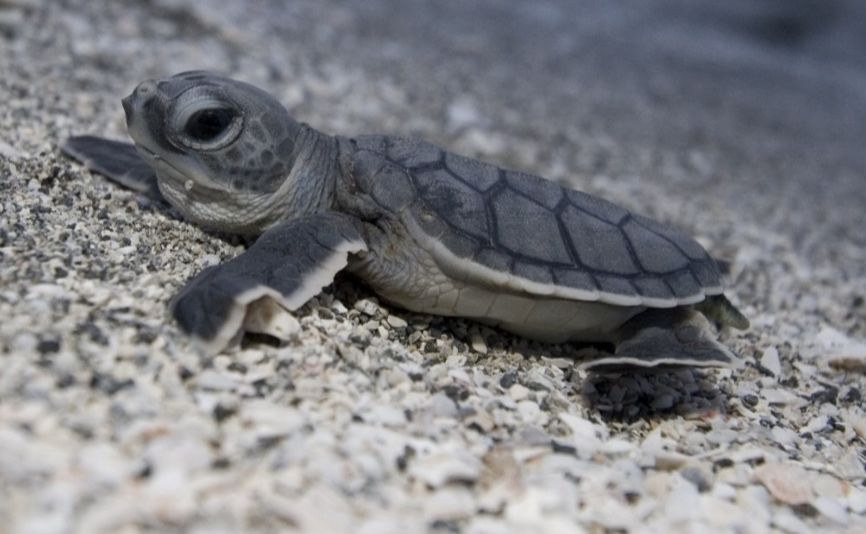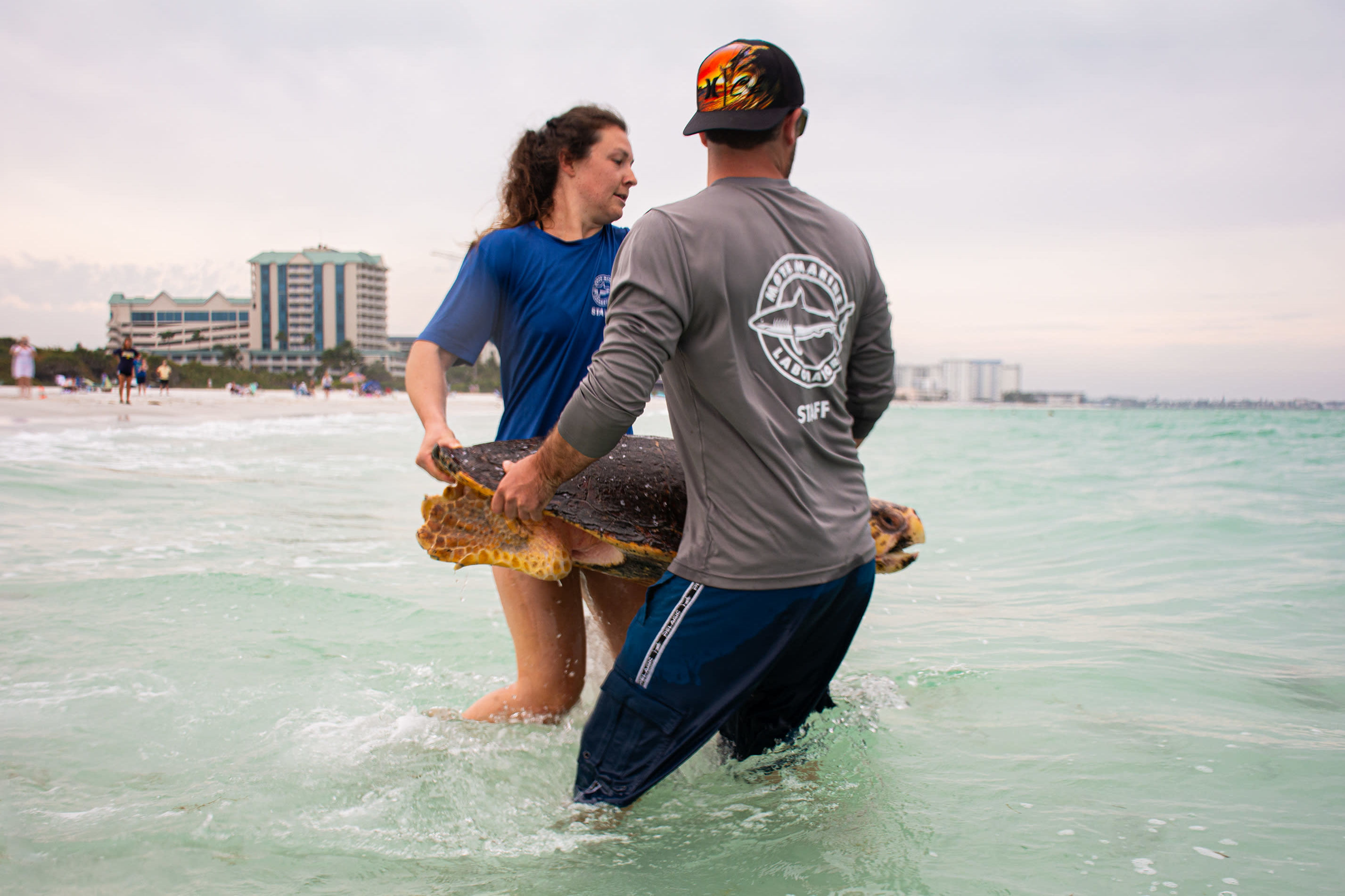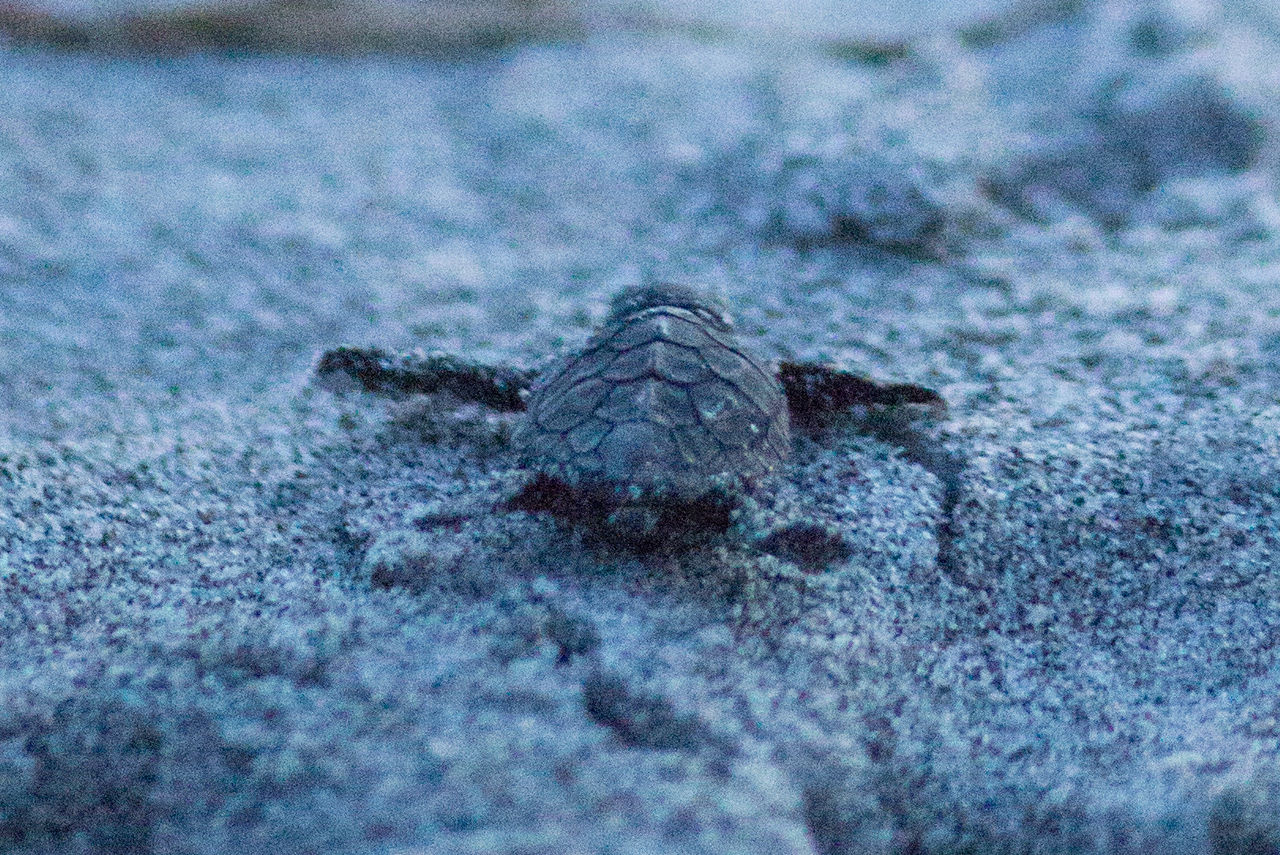Our Beaches are a Prime Nesting Site for Endangered Sea Turtles

Image: Mote Marine Laboratory
It’s a miracle of nature. From around May 1 to Oct. 31 every year, a parade of majestic giant loggerhead sea turtles swims ashore at night along our Southwest Florida beaches to lay their eggs in thousands of nests—1,263 on Longboat Key, 184 on Lido Key and 636 on Siesta Key this season alone.
Mote Marine Laboratory’s sea turtle conservation and research program’s staff and 200-plus volunteers comb our 35 miles of beaches daily for six months to protect these nests from predators—both animal and human—in hope that most of the 100 or so eggs in each nest hatch successfully and the babies make it back into the Gulf of Mexico.
This is the 36th year of Mote’s sea turtle monitoring program; its efforts began when sea turtles were placed on the Endangered Species Act in the late 1970s, says staff biologist Melissa Bernhard. And those efforts have paid off.
Because turtles start reproducing around age 25, Bernhard explains, “We started seeing the effects [of the conservation efforts] in the last five to 10 years. In 2011, when I was an intern here, we had a quarter of the nests we have now. And from 2011 to 2012, we doubled the number.”
Just one sea turtle in 1,000 will make it to maturity, which is why turtles lay so many eggs in a single nest, says Bernhard. Some eggs never hatch; some eggs and hatchlings get eaten by predators; some get caught up in lounge chairs left on the beach; and artificial lighting from beachside condos can lead some into the road instead of out to the Gulf. That’s why local municipalities regulate the use of nighttime lighting along the beaches.
Sea turtles actually prefer the east coast, Bernhard says; of the five species in Florida, we primarily see loggerheads and a few green sea turtles on the west coast. (This was a record-breaking year for green sea turtle nests; 79 versus the previous record of 36 in 2015.)
It’s illegal to touch or harass a sea turtle egg, hatchling or adult, cautions Bernhard. Be sure to fill in your sandcastles when you leave the beach for the day; a little hatchling can fall into the hole and get trapped, she says. And even your phone flashlight can disorient hatchlings. “If you see them, the best thing to do is call us,” says Bernhard.
A list of turtle-friendly do’s and don’ts can be found here.



